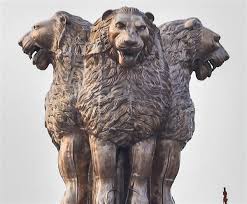
See below the answers to the Indian Politics Quiz 2024 that I posted almost a month ago. I had to delay posting the answers as the recent elections threatened to invalidate at least one of them. I also used the opportunity to check and recheck answers.
Those who have seen my earlier quizzes might know I cannot resist the temptation to elaborate on answers and even go tangentially into side stories. Therefore, some answers are long, as I may not post separate blogs. They also double as short book reviews as I cover recent or earlier books. One can skip them using the links below:
Question Index
Cabinet Ministers
Longest tenure as Cabinet Minister
1. Who had the longest uninterrupted tenure as a Cabinet Minister?
The emphasis here is on uninterrupted. The obvious clue is that it had to be somebody from the Indian National Congress, which was in power for the longest period and had the longest uninterrupted stint. Some, like me, would have thought it was Babu Jagjivan Ram. After all, he was a member of the first Nehru cabinet and even one in Indira Gandhi’s cabinet until the Emergency. Unfortunately, there was a break in his tenure when he was dropped as part of the Kamaraj Plan, and his Ministry of Transport and Communications was abolished, probably separated and/or merged with other ministries. He also did not find a place in the Shastri Cabinet.
Swaran Singh
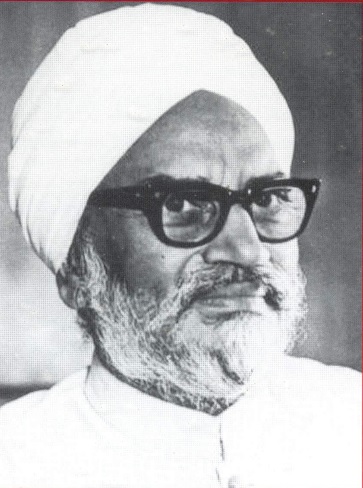
The answer is Sardar Swaran Singh! He became a Minister soon after the first general elections in 1952, succeeding Sardar Baldev Singh to represent the Sikh community.
Under various Nehru ministries, Swaran Singh was in charge of works, housing and supply, commerce and consumer industries, steel, mines and fuel, railways, and food and agriculture. Under Lal Bahadur Shastri, Swaran Singh was briefly in charge of Industries before moving to External Affairs.
Indira Gandhi retained Swaran Singh in External Affairs for a few months before moving him to Defence for the first time. That ministry was short-lived, anyway, as elections were due in 1967. In the second Indira Ministry, she retained him in Defence for three years before moving him to External Affairs till 1971, when Mrs Gandhi advanced the elections by a year. In the third Indira Ministry, against the background of the Indo-Pak war and the creation of Bangladesh, Swaran Singh played a pivotal role as the External Affairs portfolio for about three and a half years before moving back to Defence for over a year until December 1975, when he resigned, ending his long and uninterrupted tenure as Cabinet Minister for nearly 24 years.
Why did he quit?
There are no published works on Sardar Swaran Singh’s life. We might never know whether his sudden departure had something to do with his stand on the Emergency. I suspect it might be due to Sanjay Gandhi’s likely interference in defence purchases. In any case, Indira Gandhi made him head of a 1976 Committee to review the Constitution of India and suggest changes. Besides being a roving ambassador, Swaran Singh was President of the Indian Council of World Affairs from 1976 to 1981.
There was a story, most probably apocryphal, that in the early 1970s, Zulfiqar Ali Bhutto, then President of Pakistan, spoke to Indira Gandhi in praise of the Sardar, resulting in his exit from External Affairs.
In 1982, when the then Government decided to have a Sikh as the President of India, the choice fell on Giani Zail Singh. There could be no argument on Sardar Swaran Singh, in his early 80s, having had better claims based on seniority, experience, and credentials.
Bharat Ratna?
How about a belated and posthumous Bharat Ratna for the venerable Sardar and one for Babu Jagjivan Ram, the longest-serving Indian Cabinet Minister, though with gaps in between?
Foreign Minister
2. Who was the longest-serving Minister for External Affairs (earlier designated as Foreign Minister)?
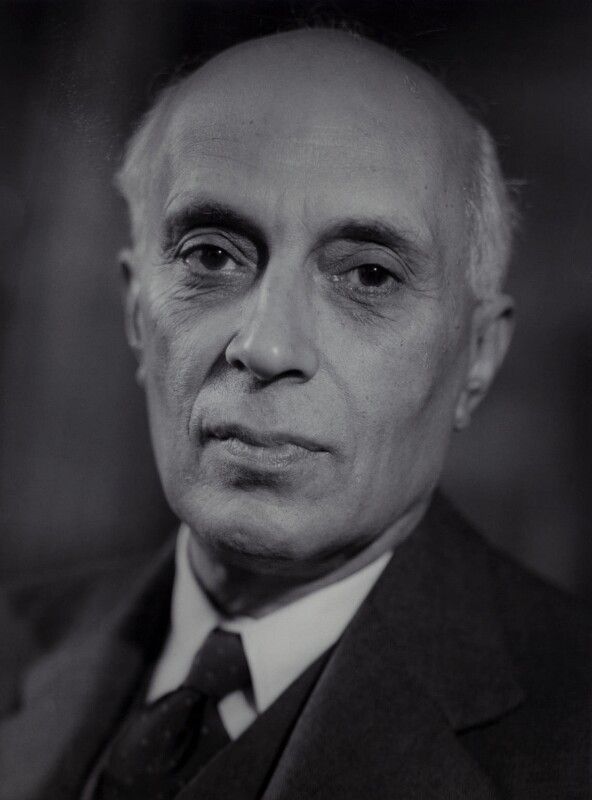
As India’s first Prime Minister, Jawaharlal Nehru kept the portfolio to himself as Prime Minister for 16 years, nine months and 12 days.
This is in addition to the few months before Independence when he headed the interim cabinet and held the same portfolio.
Would India’s foreign policy and relations be better off if the External Affairs Ministry had a full-time minister? For example, VK Krishna Menon would arguably have been better off here than in Defence, not to discount or belittle his several long-term contributions there.
First Finance Minister not to resign
3. Who was the first Finance Minister of India whose tenure did not end in a resignation?
As is well known, the tenures of the first four Finance Ministers, RK Shunmugham Chetty, John Matthai, CD Deshmukh, and TT Krishnamachari (TTK), ended in resignation.
According to AK Bhattacharya, in his recent book on Finance Ministers (First volume), the fifth Finance Minister, Morarji Desai, informed Prime Minister Nehru that he would resign. But, he was dropped along with five other ministers the next day as part of the Kamaraj Plan. I take it as a resignation as the announcement preceded being dropped from the cabinet. TTK succeeded Desai for a second term, who also resigned when Lal Bahadur Shastri became the Prime Minister.
Sachindra Chaudhuri
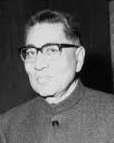
The first Finance Minister whose term did not end in a resignation was the seventh Finance Minister, Sachindra Chaudhuri, whose term lasted till the 1967 general elections, which he did not contest. He did not have much of a background in economics or finance. I am curious whether his appointment was a case of mistaken identity. Did Shastri, who would die in Tashkent a few weeks after TTK’s resignation, have in mind Sachin Chaudhuri, the founder editor of the Economic and Political Weekly? For a long time, I thought both were the same person.
KC Neogy
Less known is that Kshitish Chandra Neogy followed Chetty for a brief period. He did not present a budget and resigned along with Shyama Prasad Mukherjee, protesting against the Nehru Liaquat Pact, which affected the interests of migrants from present-day Bangladesh. Neogy’s tenure lasted just 35 days. He would head the first Finance Commission in 1951 and be among the first members of the Planning Commission.
One of my prized possessions is a folio of reprints of paintings by Rabindranath Tagore, bought for Rs 40 from Lalit Kala Akademi, New Delhi, in 1981. Brought out in 1961, in connection with the poet’s centenary, Satyajit Ray designed the book’s cover, then still just 40, and edited by Prithwish Neogy, one of KC Neogy’s sons. Neogy Jr. was an artist and sculptor who taught art history at the University of Hawaii.
Morarji again
Interestingly, Morarji Desai succeeded Choudhuri as Finance Minister and resigned again in 1969 following the nationalisation of fourteen banks. Did the jinxed tenures of Finance Ministers prompt Indira Gandhi to keep the Ministry with herself for more than one year?
Devaluation
4. Sixth June 1966, or 6/6/66, was a red-letter day in India’s post-independence economic history. The rupee was devalued by 36.5%, increasing the value of the US dollar by 57.56%. Who was the finance minister then?
Sachindra Choudhuri was the Finance Minister. I initially thought that the answer to the earlier question was different. Hence the repeated answer.
Minister with key portfolios
5. Ministers in charge of four key portfolios—Home, Defence, Finance, and External Affairs—are members of India’s National Security Council. A few ministers, including Prime Ministers, were in regular charge of up to three of these ministries. Barring Prime Ministers who held interim charge of some of these ministries, only one person was in charge of all four ministries at different points in his/her career. Who was this?
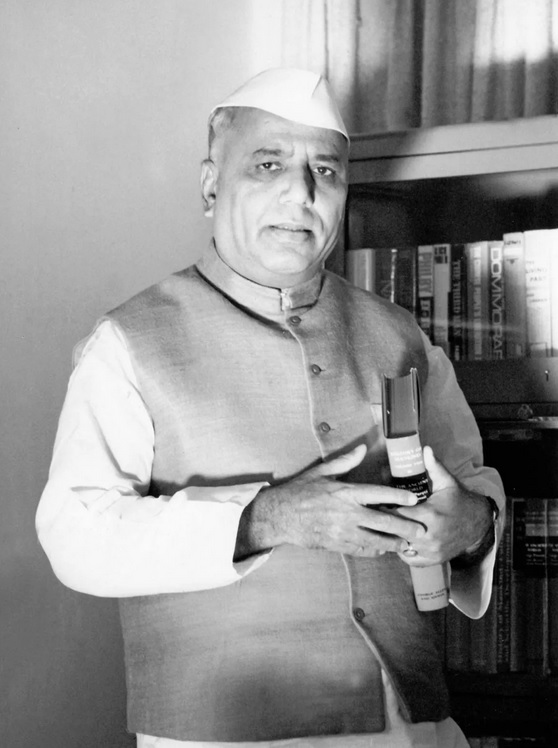
(Source: Encyclopaedia Britannica)
Yashwantrao Balwantrao Chavan was Defence Minister during 1962-66, succeeding VK Krishna Menon, who resigned following the India-China War. He was Home Minister from 1966 to 1970 and again in the short-lived Charan Singh ministry during 1979-80. YB Chavan succeeded Indira Gandhi as Finance Minister from 1970 to 1974. He would also succeed Sardar Swaran Singh as the Foreign Minister in 1974 and remain in that position till the rout of the Congress government in 1977.
YB Chavan was also the Chief Minister of the undivided Bombay State and Maharashtra and would become the Deputy Prime Minister in the Charan Singh ministry.
Welles Hangen, in his ‘After Nehru Who?’ ranked Chavan (in terms of chapter order) above Indira Gandhi but below Morarji Desai, VK Krishna Menon, and Lal Bahadur Shastri as successors to Nehru.
If he had not left the Congress in 1977, would Chavan have been the natural choice to become the Prime Minister after the assassination of Indira Gandhi? He died of a heart attack less than a month after Rajiv Gandhi assumed office as the Prime Minister to succeed his mother.
Is a posthumous Bharat Ratna likely for YB Chavan, Jagjivan Ram, and Swaran Singh sometime in 2029, if not earlier?
Constituencies
Phulpur
6. Phulpur was Prime Minister Jawaharlal Nehru’s constituency. After his death, who succeeded him as the Member of Parliament from that constituency?
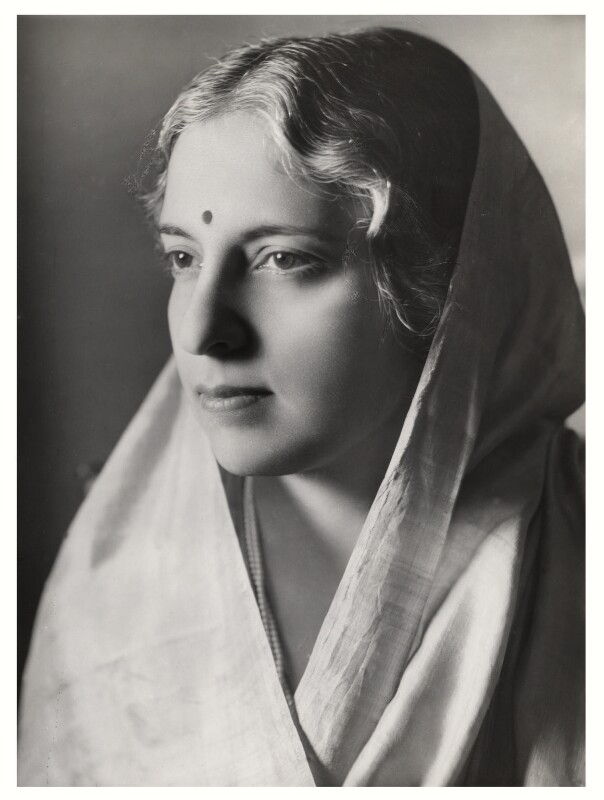
Vijaya Lakshmi Pandit, Nehru’s younger sister, succeeded him as the Member of Parliament representing Phulpur. My interest in Mrs Pandit’s life started with wanting to know how somebody who had no formal schooling replaced the venerable Sir Benegal Rama Rau as Indian Ambassador to the USA when the latter was there for just a few months. There are no credible answers, or even a clue, either in her memoirs published in 1979 or the recent biography by Prof Manu Bhagavan of the City University of New York. Her memoirs suggest that the change came rather serendipitously. She learned from Mahatma Gandhi on a visit to India that she would get to know soon of a change.
Diplomatic career
Mrs Pandit’s high-profile diplomatic career started in 1947 and ended in 1962. It started in the USSR as India’s first Ambassador and continued in the USA and later the UK. During this period, she represented India in seven countries and the United Nations, where she became the first woman President. She became the Governor of Maharashtra in 1962, soon after her return to India. When she returned, did she entertain hopes to step into her brother’s shoes?
According to her memoirs, Mrs Pandit was diffident about a career in diplomacy. Maulana Azad told her that the PM wanted to send her to Washington, but he was pushing for Asaf Ali (whose wife Aruna was a Minister in the Nehru Cabinet) and that she should be prepared to go to Moscow. She preferred to continue working in the Uttar Pradesh Ministry and the Constituent Assembly, where she was a member. She writes:
A few days afterward Bhai had another talk with me and said he had decided on Moscow for me, and in a day or two the Government would ask the Soviet Government for an agrement. I expressed my doubts about a diplomatic career. Ad hoc visits to conferences and the United Nations were one thing, but to take on a task that needed special training, and at a time when the eyes of the world were on newly independent India, might be a mistake. I knew nothing of embassies or of Moscow. He suggested I should speak to Sir Girja, and later we could discuss the matter again.
Vijaya Lakshmi Pandit, The Scope of Happiness: A Personal Memoir, Weidenfeld and Nicholson, London, 1979.
To put matters in context, PM Nehru was also the Foreign Minister. Sir Girja Shankar Bajpai, then Secretary General of the Ministry, talked Mrs Pandit out of her inhibitions.
Assessment
Views on Mrs Pandit have been quite divergent. Kallol Bhattacharjee (Nehru’s First Recruits, 2024) commends Mrs Pandit for “modifying India’s foreign policy consciousness, which had emerged in the previous century and come into the focus of the Congress during the inter-war period.” He concludes that it was perhaps to her “credit that even before Jawaharlal Nehru had become the single-man think tank that he was for India’s foreign affairs beginning with 1947, his sister had created a playing field where her role would be sought out singularly, because she had take the front row seat in the theatre of the world and saw the emergence of the new world.”
On the other hand, Louis Fischer, the American journalist and biographer of Lenin, Stalin, and Gandhi (the Mahatma), the last became the basis of the Ben Kingsley-starring Attenborough film. He wrote this of Mrs Pandit: “…stupid, knew nothing about economics and politics and had made many errors because of her ignorance and arrogance.” Bhagavan (Vijaya Lakshmi Pandit: A Biography, 2024) argues that Fischer’s views are “not comported” by any other. According to him, Mrs Pandit “made critical contributions to the post-war order in theory and practice.”
Former Foreign Secretary MK Rasgotra (A Life in Diplomacy, 2019) includes Mrs Pandit in the ‘star-quartet’ among Indian diplomats, the others being VK Krishna Menon, Sarvepalli Radhakrishnan, and Sardar KM Panikkar. High praise indeed! While the MEA top brass freely criticised the other three, they spared Mrs Pandit because she was the PM’s sister and ‘because of her undoubted diplomatic skills.’ The diplomats were perhaps being, er, diplomatique!
Mrs Pandit’s tenure as the first woman President of the UN General Assembly was considered successful. Somerville College (where Indira Gandhi studied) conferred an honorary doctorate on her, and a portrait of her hangs in their library.
Another blog post
For me, one thing led to the other, discovering new and unknown aspects of Mrs Pandit’s life, most importantly of her early elopement and marriage to Syud Hossain, who was living in Anand Bhavan while being the editor of the Independent. This English newspaper was started by her father, Motilal Nehru. The reactions from Motilal, Jawaharlal, and Gandhi differed from what one would have expected. The Mahatma had her (then Sarup Rani) sent to Sabarmati, where he talked her out of the alliance while they collectively prevailed on Hossain to annul the marriage. Hossain’s editorship of the Independent was terminated and sent to the USA to pursue the cause of Indian independence.
Of course, the fairly recently widowed Mrs Pandit and Hossain would get together again, the latter almost directing her lecture tour of the United States in the mid-40s. Nehru appointed Hossain as the first Indian Ambassador to Cairo, where he died and lies interred. A recent biography of Hossain pursues his side of the story in some detail (NS Vinodh, A Forgotten Ambassador in Cairo, 2021). In a separate post, I hope to trace these and other aspects of Mrs Pandit’s life and career in greater detail.
Bellary
7. In her electoral debut, Sonia Gandhi contested from Bellary in Karnataka and Amethi in Uttar Pradesh, winning both. Who did she defeat in Bellary?
Sushma Swaraj. At 25, she was probably among the youngest, if not the youngest, minister of an Indian state.
Rae Bareli
8. Rahul Gandhi, the scion of the Nehru/Gandhi family, is contesting the elections from Rae Bareli, apart from Wayanad in Kerala. Rae Bareli has a long association with the family. Which Member of Parliament represented Rae Bareli in 1952?
Feroze Gandhi represented Rae Bareli from 1952 till his death in 1960.
North Paravur
9. Why is the assembly constituency of Paravur in Kerala significant in Indian electoral history?
The name of the constituency should have been North Paravur. An electronic voting machine (EVM) was used for the first time in India in 50 booths in the North Paravur assembly constituency. The court invalidated the result as the law did not then provide for such machines.
Representing different regions
10. My research shows that only one person represented three parts of the country in the Lok Sabha: North, East (including North East), West, or South. Who was that person? I will be happy to stand corrected if there are others, including those who won from all four parts of the country.
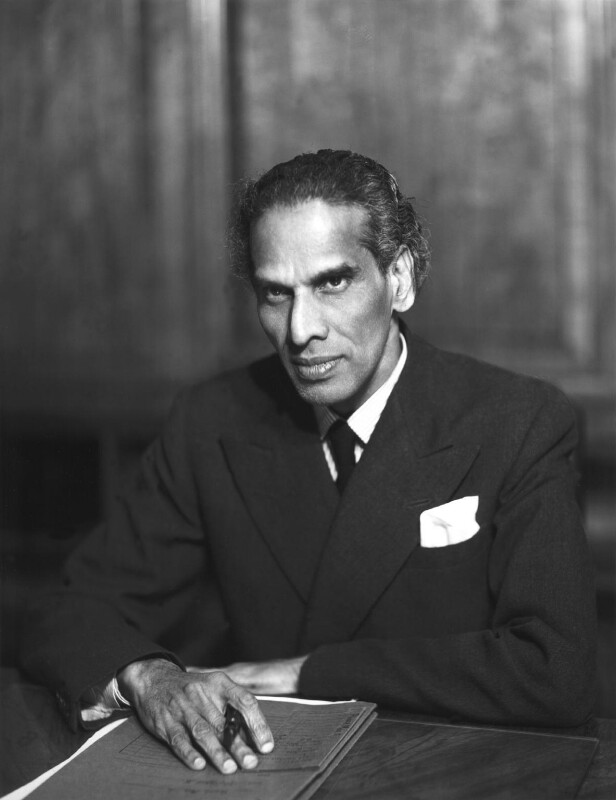
(Courtesy: National Portrait Gallery, London)
VK Krishna Menon represented Mumbai North (1957-67) in the West, Midnapore (now Medinipur) in West Bengal (1969-71) in the East and Trivandrum in Kerala (1971 till his death in 1974) in the South. In my school days, when we first moved back to Trivandrum in 1971, the city walls still bore graffiti seeking votes for Krishna Menon.
Towards the end of the following year, in 1972, my father visited Australia during their election, resulting in the Labour Party’s first victory, bringing in Gough Whitlam as the Prime Minister. Visiting all the major cities, he observed that one striking contrast with India was how silent the elections were. A visitor would hardly know that the elections were on unless someone informed him – no graffiti, no public rallies, and no cars plying around with loudspeakers blaring political slogans.
I would be happy to know if others like Menon had represented three or more regions of the country in the Lok Sabha.
People
Lonely twosome
11. What is the significance of Dr AK Patel and CJ Reddy in Indian politics?
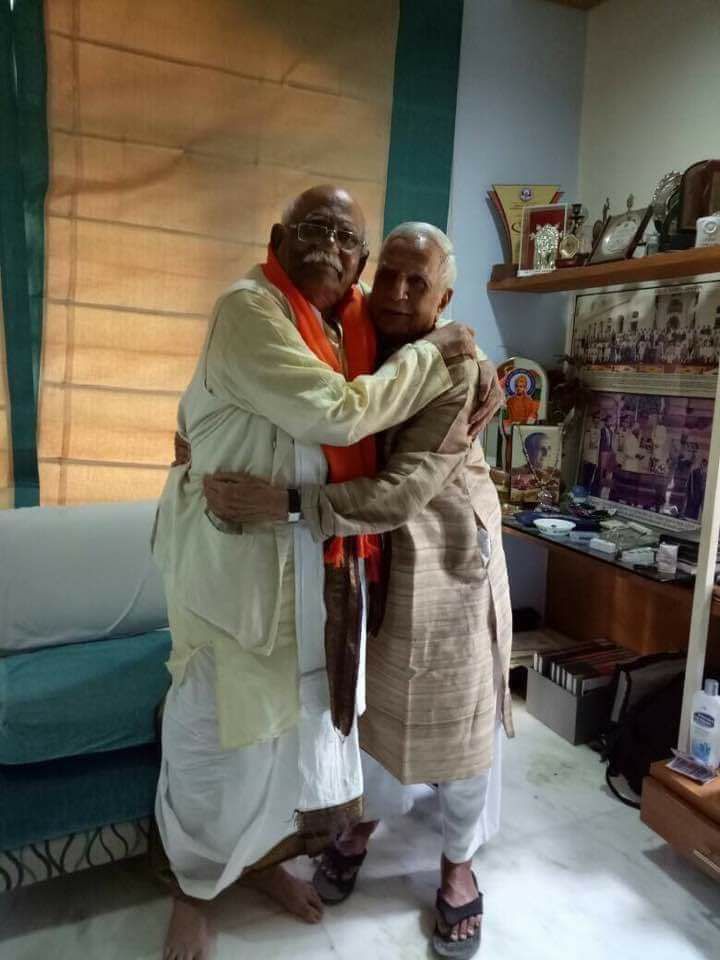
They were the only two Members of Parliament of the Bhartiya Janata Party in the general elections of 1984 held soon after the assassination of Indira Gandhi.
Chandupatla Ranga Reddy represented the Hanamkonda constituency in Andhra Pradesh, which PV Narasimha Rao earlier represented.
Amritlal Kalidas Patel represented the Mehsana constituency from 1984 to 1999. He was later in the Rajya Sabha for one term from 2000 to 2006 and briefly served as a minister in the Vajpayee government during 1998-99.
RBI Governor
12. Which former Governor of the Reserve Bank of India was a candidate for the position of President of India? Which party did he represent?
CD Deshmukh represented the Swatantra Party, the Jan Sangh (the precursor to the BJP), the BKD (Bharatiya Kranti Dal of Charan Singh), and the PSP (Praja Socialist Party) in the 1967 Presidential elections. His opponents were Neelam Sanjiva Reddy, the official candidate of the Indian National Congress, and VV Giri, former Vice President who stood for elections as an independent peeved that he was not considered for automatic elevation like his predecessors, Dr S Radhakrishnan and Dr Zakir Hussain, both of whom became Presidents. Eventually, Giri won with the backing of Prime Minister Indira Gandhi, who called for a conscience vote. Sanjiva Reddy was only 54. If he had been elected, he would still have been the youngest President of India.
In his book India After Gandhi, Ramachandra Guha erroneously refers to Subba Rao as the candidate of the Swatantra Party. He rectified this in the next edition by adding CD Deshmukh as the candidate. But, strangely, the name of Subba Rao still remains! Guha’s paragraph now reads like this:
The official Congress candidate was Sanjiva Reddy. V. V. Giri had decided to contest as an independent, while the opposition had put up C. D. Deshmukh, a former civil servant and Cabinet Minister. In violation of party practice and party discipline, the prime minister decided she would support V. V. Giri. This decision was not made public, but it was conveyed to her followers, who went around canvassing the younger Congress MPs to vote for Giri. The Congress president, S. Nijalingappa, now pressed the prime minister to issue a public declaration of support for Reddy. When she wouldn’t, he spoke to the Jana Sangh and Swatantra leaders asking them to shift their own allegiance from Subba Rao to Reddy. This move was seized upon by Mrs Gandhi’s camp, who accused Nijalingappa of hobnobbing with the enemy. They ‘requisitioned’ a meeting of the AICC to discuss the matter. The request was refused.
Ramachandra Guha, India After Gandhi: A History, 3rd Edition, 2023.
Annual lecture
13. In 2008, the Parliament of India instituted an annual lecture in memory of one of India’s most distinguished parliamentarians. Who was this?
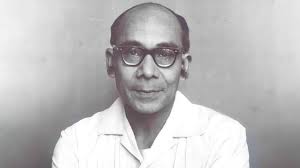
Hiren Mukherjee of the Communist Party of India was widely considered one of the most distinguished parliamentarians. He represented Calcutta North East for five consecutive terms from 1952 to 1971. He lost in the 1977 elections following the Emergency, which his party supported. I remember my father, sitting in faraway Trivandrum, regretting Mukherjee’s defeat. The new government gave the memorial lecture a quiet burial in 2014. I could attend Jagdish Bhagwati’s Hiren Mukherjee lecture at the Parliament in 2011.
Gaya Lal
14. Gaya Lal will be remembered forever in Indian politics. Why?
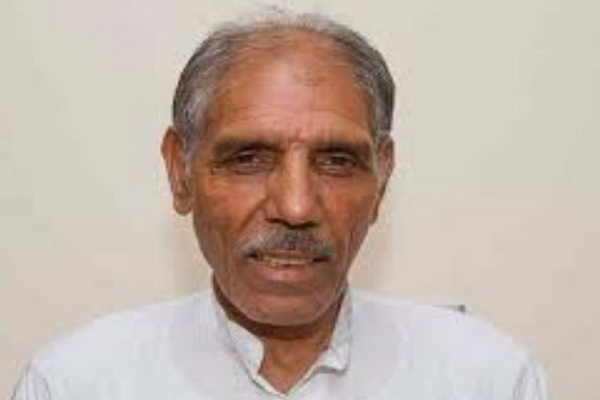
Within 24 hours, sometime in 1967, Gaya Lal changed parties three times – from the Indian National Congress to the United Front, then back to the Congress, and again to the United Front. When Rao Birender Singh, Congress leader, brought him to meet the press in Chandigarh after Gaya Lal’s return to the Congress, he declared, “Aaya Ram Gaya Ram” (The Ram who left has now come back). Thus, the phrase came to represent the ugly side of defections in Indian politics.
Shyam Saran Negi
15. Who was Shyam Saran Negi?
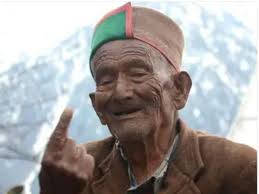
He is widely considered the first voter in the 1951 Indian elections, the first since Independence under the new Constitution, which introduced universal adult suffrage. He would not have been eligible to vote in the earlier elections under the Government of India Act of 1935.
Giant killer
16. Which parliamentarian, fighting elections in a state other than his home state, defeated one of the new state’s tallest leaders and earned the epithet “giant killer”?
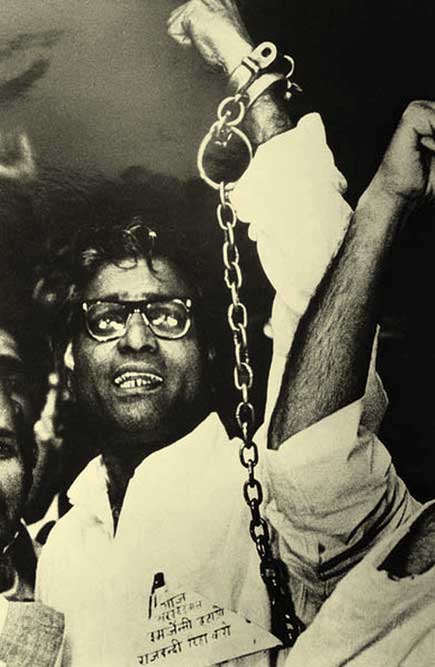
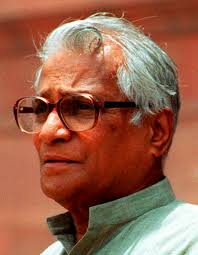
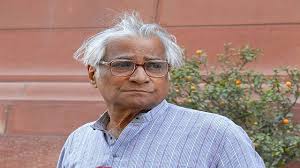
George Fernandes defeated the formidable S.K. Patil in the 1967 general elections from the South Bombay constituency. Almost literally bearding the lion in his den, this victory earned Fernandes the epithet “giant killer”.
Lok Sabha MP most often
17. An Indian politics quiz is incomplete without a question on who served the longest. So, who was elected to the Lok Sabha most often?
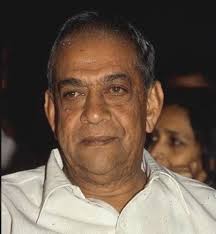
Indrajit Gupta of the Communist Party of India was elected to the Lok Sabha eleven times but from different constituencies – Midnapore, Basirhat, Calcutta South West, and Alipore.
Gupta lost only once, in 1977, in the elections held after the Emergency, which his party had supported.
Longest MP from one constituency
18. Who was elected to the Lok Sabha from the same constituency the maximum number of times? The answer is different from that of the previous question.
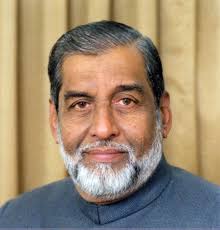
A member of the Indian National Congress, PM Sayeed represented Lakshadweep in the Lok Sabha for ten consecutive terms from 1967 to 2004. He was defeated in 2004 by 71 votes. Thereafter, he represented New Delhi in the Rajya Sabha from 2004 till his death in 2005.
Sayeed was minister for power during 2004-05.
Rajya Sabha MP most often
19. Who served the longest as a member of the Rajya Sabha?
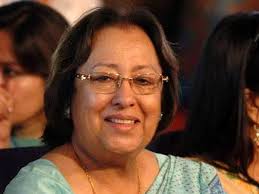
Najma Heptulla was a member of the Rajya Sabha for six terms for 34 years. She represented Maharashtra, Rajasthan and Madhya Pradesh, the last for a residual term of four years.
She was Deputy Chairman of the Rajya Sabha from 1985 to 86. She was also minister for minority affairs and Governor of Manipur.
Longest serving Chief Minister
20. Who has been the Chief Minister of an Indian State for the longest period?
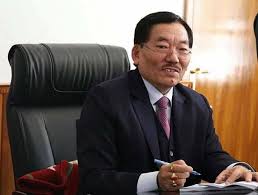
This question was one of the reasons I delayed compiling the answers. There was a chance that Naveen Patnaik might break the record another two months into a new term. Alas, that was not to be, as his party lost to the BJP in the recent elections. Therefore, the record of five terms or 25 years is safe with Pawan Kumar Chamling, Chief Minister of Sikkim from 1994 to 2019.
The Opposition
Largest opposition
21. Who headed the largest opposition party after the first general elections held in 1952?
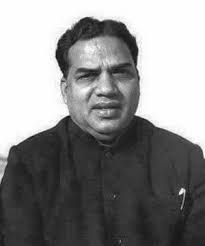
AK Gopalan was a member of the Communist Party of India. His full name was Ayillyath Kuttiari Gopalan Nambiar. But people knew him better by his initials, AKG. His photos can be seen at the Indian Coffee House’s nationwide outlets. However, he was not officially the Leader of the Opposition.
After the party split in 1964, AKG moved to the Communist Party of India (Marxist).
Leader of the Opposition
22. Who was the first Leader of the Opposition?
For recognition as the leader of the opposition, the leader of the largest party that is not in government, his or her party
should at least be able to command a strength which would enable them to keep the House, i.e. their number should not be less than the quorum fixed to constitute a sitting of the House, which is one-tenth of the total membership (of the House).
M.N. Kaul and S.L. Shakdher, Practice and Procedure of Parliament, 2016, Page No. 402. Words in brackets added.
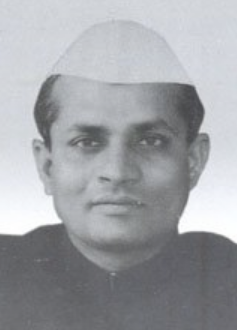
This number currently stands at 55. Consequent to the split in the Congress party in 1969, the 60 MPs who disassociated themselves from Mrs Gandhi satisfied the tests for recognition as an Opposition. That was the first time we had a Leader of Opposition—Dr Ram Subhag Singh, who remained so from 17 December 1969 to 27 December 1970. Shyam Nandan Prasad Mishra became the leader of the opposition in the Rajya Sabha and remained so from December 1969 to March 1971.
Kaul and Shakdher further clarify:
He (Subhag Singh) was merely given a room in Parliament House and had no other privileges. He did not function as the Leader of Opposition; other Opposition parties/groups did not give up their right to speak for themselves. The Leader of Opposition could not even make obituary references on behalf of all Opposition parties/groups.
Kaul and Shakdher, op.cit., Page No. 156, foot note no. 187. Words in brackets added.
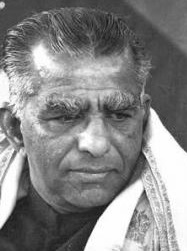
The position of Leader of the Opposition was officially recognised only with the enactment of the Salary and Allowances of Leaders of Opposition in Parliament Act, 1977. This statutory recognition accorded to the Leader of the Opposition came with a certain salary, facilities, amenities, and some privileges on ceremonial occasions. CM Stephen of the Indian National Congress thus became the first official Leader of the Opposition. He remained in this position from 12 April 1978 to 10 July 1979.
Non-Congress Chief Minister
23. Who was the first non-Congress Chief Minister of an Indian State?
EMS Namboodiripad of the then Communist Party of India was the first Chief Minister of a non-Congress government in India. His government in Kerala was also the first to be dismissed under Article 356 of the Constitution of India. After the party split in 1964, EMS moved to the Communist Party of India (Marxist).
Congress President
24. Among the Presidents of the Indian National Congress since Independence, only three never held any ministerial positions at the Centre or the States, nor was a State Governor. Two of them, as is well-known, are Sonia Gandhi and Rahul Gandhi. Who was the third?
Purushottam Das Tandon was the President of the Nagpur session of the Indian National Congress held in 1950. But he resigned soon thereafter following differences with Prime Minister Nehru. He never held any position with the government as a minister or a Governor.
A forgotten leader
25. One of the founders of the Bharatiya Jan Sangh, he became the president of his party in the late 1960s, taking it to its highest tally of 35 seats in the Lok Sabha. But, he would soon be expelled in the 1970s due to ideological differences. Barring a year or two in the late 70s, when he was with the Janata Party, he was always in the Opposition and remained a bitter critic of the Bharatiya Janata Party. A prolific author of around three dozen books, many on Kashmir (he was from Jammu/Gilgit Baltistan), he died in 2016 at 96, relatively unknown. Who was this?
Balraj Madhok.
Prime Ministers
Middle name
26. Ranchhodji was the middle name of which Prime Minister?
Morarji Desai.
Longest living PM
27. Which Prime Minister lived the longest?
Former Prime Minister, though acting, Gulzarilal Nanda (1898-1998), beat Morarji Desai (1896-1995) by a few months. They died six and ten months short of their centenary, respectively.
The Ambassador PM
28. Who was the only Prime Minister to have been a former Indian Ambassador?
I.K. Gujral was the Indian Ambassador to the USSR from 1976 to 1980.
PMs who were CMs
29. As is well known, Narendra Modi was Gujarat’s Chief Minister before becoming Prime Minister. Five other Prime Ministers were also the Chief Ministers of their States before becoming PMs. Who were they, and what sets Modi apart from them?
The other Chief Ministers were Morarji Desai (4 years -6 months), Charan Singh (1-6), VP Singh (2-1), PV Narasimha Rao (1-4), and HD Deve Gowda (1-6). Their combined tenure was less than Modi’s, at 12 years and seven months.
Nehru’s foreign visit
30. Which country has Jawaharlal Nehru travelled the most to, other than the US and UK, where travels were also for non-bilateral engagements?
PM Nehru visited Egypt four times. These are unlikely to be related to the Non-Aligned Movement (NAM), for which the second summit was held in Cairo only in October 1964, after Nehru had passed away. The first was held in 1961 in Belgrade. New Delhi’s turn came in 1983. As is well known, PM Nehru, Gamal Abdel Nasser of Egypt, and Josip Broz Tito of Yugoslavia spearheaded NAM. How nations consider leaders of other nations adds a fresh perspective on the leader and the relations between the two countries. Nasser honoured Tito with Egypt’s highest honour, the Order of the Nile, which strangely never went to Nehru despite being perceived as close to Nasser and his four visits to Egypt.
Biography/Autobiography/Memoir
A biography
31. A biography on which former Prime Minister is subtitled, “A Life in the Service of the People”?
“Gulzarilal Nanda: A Life in the Service of the People” was written by Promila Kalhan in 1997.
Nehru’s Autobiography
32. Jawaharlal Nehru’s Autobiography was first published in 1936 when he was just 47. What was its subtitle?
“Towards Freedom” was the subtitle used in the original 1936 edition. However, this has not been used in certain subsequent editions, maybe because they were published after independence. Like most of his other works, this was written during one of his prison terms.
Autobiographies
33. Apart from Jawaharlal Nehru, who were the only other Prime Ministers to write their autobiography/memoir?
Morarji Desai published “The Story of My Life” in at least three volumes.
IK Gujral wrote “Matters of Discretion: An Autobiography” in 2011. This webpage declares that it is the first autobiography by an Indian Prime Minister, which, as we can see, is not true.
PV Narasimha Rao wrote “The Insider,” a fictional account of his life that covers real-life incidents. It does not count as a memoir or an autobiography.
Two biographies
34. Which former Prime Minister’s biographies carry the subtitles “Churn of Conscience” and “A Life of Truth in Politics”?
Lal Bahadur Shastri.
Roses in December
35. Which former minister and legal luminary titled his autobiography “Roses in December”?
Mohammadali Carim Chagla was the Education Minister and Indian Ambassador to the USA.
Zulfi, My Friend
36. Which former Parliamentarian, known for his quick-witted humour, wrote a biography of Zulfiqar Ali Bhutto, former Prime Minister of Pakistan, titled “Zulfi, My Friend“?
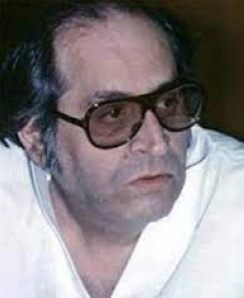
Piloo Mody, an architect by training and one of the founders of the Swatantra Party, was the Pak President’s classmate and roommate at the University of California, Berkeley. Son of Sir Homi Mody and younger brother of Rusi Modi (Tata Steel), died young at the age of 56, but four years after Bhutto was hanged. Zulfi My Friend was written in the early 1970s when his longtime friend was still alive and was first the President and, later, the Prime Minister of Pakistan. The book was one of my first reads in politics/history, perhaps even before Collins/Lapierre’s Freedom at Midnight.
An extract from a letter by Bhutto, published by way of a foreword to the book, read as follows:
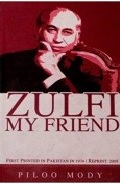
My dear Piloo,
“…I recall all the incidents and conversations we had in Bombay and in California, right from the time you did not allow me to pass you when we were coming down the stairs in Cathedral School up to the time I said goodbye to you and Vina when you left California for Europe for your holidays and illegal honeymoon in the summer of 1950. You have a fairly good memory and I think you will be able to remember the more important events…”
Known for his quick wit, a Rajya Sabha publication titled “Lighter Moments in the Rajya Sabha” (1985) probably has more anecdotes relating to Piloo Mody than any other parliamentarian.
Places and Monuments
Teen Murti House
37. Jawaharlal Nehru lived in Teen Murti House as Prime Minister. What was it earlier known as, and who was its resident before independence?
Teen Murti House was known as the Flagstaff House. Field Marshall Sir Claude Auchinleck, the previous resident, was relocated to accommodate the new Prime Minister.
India Gate
38. In 2022, a Netaji Subhas Chandra Bose statue was erected at the India Gate in New Delhi. Whose statue held the space under the canopy earlier, and when was it removed?
The statue of King George V, who passed away in January 1936, was installed in the same year. It was removed only in 1968 after increasing objections over the years.
Tashigang
39. What is the importance of Tashigang in electoral politics?
At 15,256 feet, Tashigang in Himachal Pradesh has the world’s highest polling station.
Election symbols
The Jan Sangh
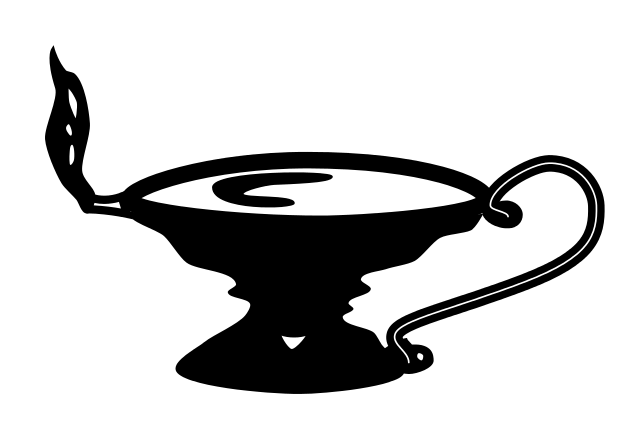
40. As is well known, the lotus is the election symbol of the Bhartiya Janata Party. What was the symbol of its predecessor, the Bhartiya Jan Sangh?
A lighted lamp.
Indian National Congress
41. Under which election symbol did the candidates of the Indian National Congress contest the first three general elections?
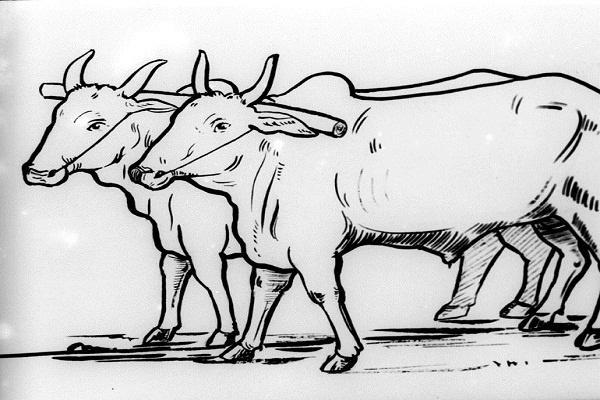
Two oxen. After the party split in 1967, ‘cow and calf’ became the symbol. After the Emergency, this symbol was the subject of several derisive comments, including cartoons depicting Indira Gandhi as the cow and Sanjay Gandhi as the calf.
Elephant
42. The Bahujan Samaj Party has the elephant as an election symbol. Which other party also has the elephant as an election symbol?
Asom Gana Parishad.
Torch
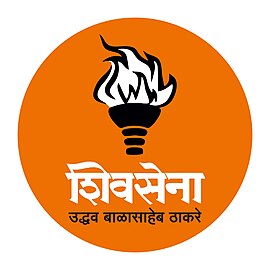
43. Which political party has a torch as its election symbol?
The Udhhav Thackeray faction of the Shiv Sena, after the Eknath Shinde faction successfully claimed the earlier official symbol.
Who am I?
44. I was related to the royal family of my state. I did my MA and LLB from one of India’s top universities. As a freedom fighter and as an opposition leader after independence, I went to jail nearly sixty times, including for three years during the Quit India Movement, as a president of the Students Congress. I have been in several political parties, some more than once. I was the leader of the Opposition in the State Assembly. Later, I was in the Rajya Sabha for two tenures. I contested for the Lok Sabha four times and lost thrice. But history will remember one of my three losses as much as my lone victory against a political giant. Though poorly maintained, a park in my city bears my name. Name me.
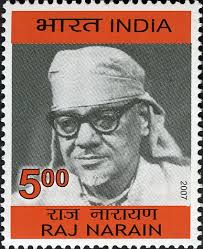
Raj Narain belonged to the Narayan dynasty, which ruled Benares (also Kashi/Varanasi) in the 19th century. In 1975, the Allahabad High Court upheld his election petition against Indira Gandhi, which led to the Emergency. After the Emergency, he defeated Indira Gandhi from Rae Bareli in 1977. Listening to the election results, All India Radio never announced it until late or the next morning. But we confirmed it on BBC. I could have given an additional clue that Raj Narain was Minister for Health and Family Welfare in the Janata Government, but that would have been a giveaway.
During my recent leisurely ten-day sojourn in Varanasi, I used the Raj Narain Memorial Park near my hotel for evening walks. It was a blissful getaway from the overcrowded roads. But, I gave up after two days as it was badly lit, flooded in parts, and poorly maintained walk paths.
Who was he?
45. In the early 1990s, in a rundown locality of a city, the landlord of a one-room accommodation threw out his tenant for non-payment of rent for several months. Also thrown out were the tenant’s worldly belongings: a cot, a bucket, and a few aluminium utensils. The old man sought time to clear the arrears. A few neighbours pleaded with the unrelenting landlord on behalf of the poor tenant. On seeing the commotion, a journalist passing by took a few photographs and wrote an article about the incident. On seeing the pictures, his editor recognised the old man as a well-known former politician. Who was he?
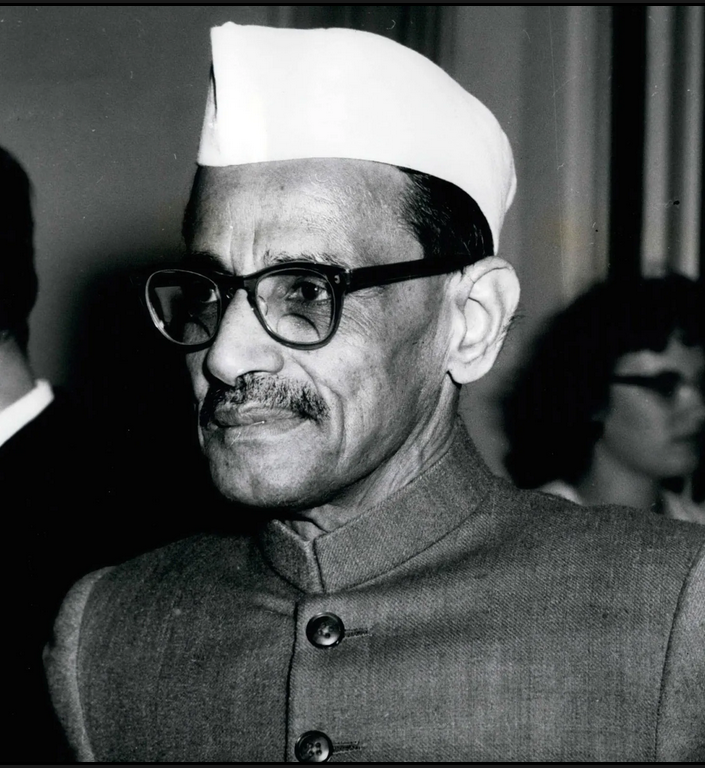
(Source: Encyclopaedia Britannica)
I couldn’t locate the original article, probably in Hindi or Gujarati. But, see this, this and this, among other sources.
Gulzarilal Nanda was interim Prime Minister for two terms of 13 days each. The first was between the tenures of Jawaharlal Nehru and Lal Bahadur Shastri, and the second was between the tenures of Shastri and Indira Gandhi. A few years after the above story came to light, the government of the day honoured him with a Bharat Ratna in 1997. After his death, the government issued a postage stamp in his honour.
Life After
After the original news item, Nanda seems forced to accept a monthly pension of Rs 500. He also moved into his daughter’s flat, where he died in 1998. This link says that at the time of his death, his relatives could pack all his belongings into one bag. As a crusader against corruption all his life, Nanda’s frugal life was a message against conspicuous consumption, which he felt was at the root of corruption. For other facts about Nanda and his life, see here.
Nanda was also the first Deputy Chairman of the Planning Commission. But, CD Deshmukh, the Finance Minister, felt later that Nanda could not devote much time to the Commission’s work. His suggestion to Nehru that Sir VT Krishnamachari be made the Deputy Chairman was accepted and implemented the next day. According to Deshmukh, Nanda nursed a grouse against him for a long time. (See Deshmukh, The Course of My Life, 1974)
Quiz and answers compiled by G Sreekumar ©
![]()
Lot of information, perhaps unknown to many. This could have taken an extensive research. Congratulations.
Thank you very much. Frankly, the research tended to get a bit too much and unending. So, I finally had to post it to get it off my head. As a result, there are a few rough edges and at least one error. I will try to sort them out soon.
Outstanding research! I was expecting merely an answer to each of the questions, as is the practice, but I am pleasantly surprised to find detailed explanations for every question which in themselves are quite a mine of information on Indian politics and government since Independence. I do hope this Quiz reaches out to all those interested in the country’s democratic and parliamentary history, especially the younger generations. Congratulations, Sreekumar!
Thank you very much. Coming from a former senior Parliament official, it is high praise indeed. I will incorporate the small correction that you sent separately.
Quite intersting and kept me captivated. Why nothing on women MPs.? MPs expelled frm parliament? Parties with a single MP representation? Longest debates happening? Bills getting passed by voice vote or by the thinnest of margins after cut motion,…………..etc
Rajua sabha questions are very few. There have been some siblings,cousins, husbaand_wife duo in parliament, I missed those questions in your quiz,
well researched and prepared, Kudos to yu for the painstaking research.
CD
CD
Thank you CD. If you see the first paragraph, questions were capped so that it does not become unnecessarily long. Anyway, elections will come again. There are questions on women MPs. For instance on Vijaya Lakshmi Pandit.